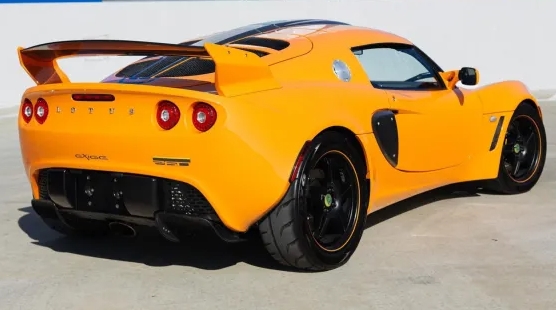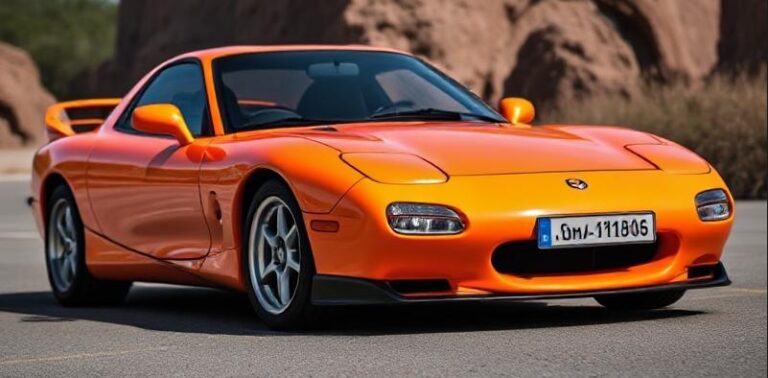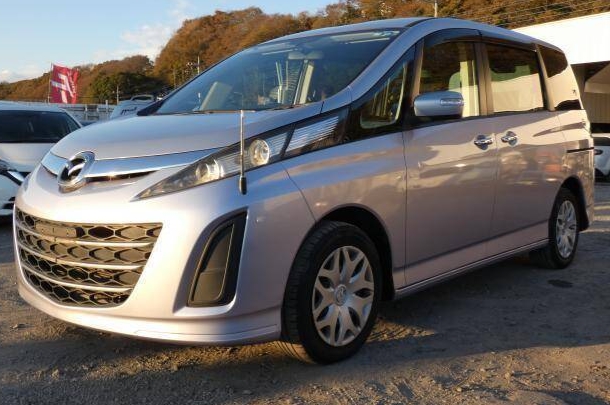The Evolution of the Lotus Exige: A Legendary Track-Focused Sports Car
The Lotus Exige stands as one of the most iconic and revered models in the world of lightweight, track-oriented sports cars. Known for its razor-sharp handling, minimalistic design, and pure driving experience, the Exige has undergone significant evolution since its inception in the early 2000s. This article traces the complete history of the Lotus Exige, covering its production years, various models, and trim levels, providing a comprehensive understanding of its development and impact on the automotive world.
Origins and First Generation (2000–2011)
Background and Development
The Lotus Exige was initially conceived as a more focused, track-ready evolution of the Lotus Elise. While the Elise was already celebrated for its lightweight chassis and nimble handling, Lotus aimed to create a more aggressive, performance-oriented variant. The first-generation Exige was introduced at the 2000 British International Motor Show and quickly garnered attention for its minimal weight and exceptional cornering capabilities.
First Generation (Type 111/Type 2-Eleven, 2000–2011)
- Introduction and Production Timeline: The original Lotus Exige was produced from 2000 until 2011, with several updates during its lifespan.
- Design and Engineering: Based on the second-generation Lotus Elise chassis (Type 111), the Exige featured a fixed roof (unlike the removable soft top of the Elise) and a more aggressive stance. Its lightweight aluminum chassis and composite bodywork contributed to a curb weight of approximately 725 kg (1,598 lbs).
- Engine Options:
- Initially powered by a 1.8-liter Rover K-Series engine producing around 190-189 horsepower.
- Later, a supercharged version was introduced, boosting power to approximately 218-220 horsepower, significantly improving performance.
- Models and Trim Levels:
- Exige S: Introduced in 2004, the S trim featured a supercharged engine, enhanced suspension, and improved aerodynamics.
- Exige Cup: A more track-focused variant, with reduced weight, upgraded suspension, and racing-oriented features.
- Exige 240R: Launched around 2007, with a 240 PS (approximately 237 horsepower) engine and further weight reduction.
- Exige S 240 and 260: The 2009 update brought the Exige S 240 and later the Exige S 260, with more power and handling enhancements.
- Exige S 260 Final Edition: A limited run model marking the end of the first-generation Exige, featuring unique badges and additional equipment.
Notable Features:
- Manual transmissions (5-speed and later 6-speed).
- Enhanced aerodynamics, including front splitters and rear spoilers.
- Lightweight construction to maximize agility.
- Track-ready suspension setups.
Summary of First Generation:
The first-generation Exige was renowned for its uncompromising focus on performance, with a low curb weight, high power-to-weight ratio, and exceptional handling. Its production run spanned over a decade, reflecting its popularity among enthusiasts and racers.
Second Generation (2012–2021)
Development and Introduction
Building upon the foundation of the first Exige, Lotus introduced the second-generation Exige in 2012, leveraging the newer Elise chassis (Type 3-Eleven). This new model aimed to refine aerodynamics, improve ride quality, and incorporate modern technology while maintaining the core philosophy of lightweight, pure driving experience.
Second Generation (Type 25, 2012–2021)
- Design and Engineering: The 2012 Exige featured a more aerodynamic body with larger front and rear splitters, a prominent rear wing, and refined chassis dynamics. The weight was kept in check at around 900 kg (1,984 lbs).
- Engine Options:
- Powered by a supercharged 1.8-liter inline-4 engine, producing 345 horsepower in the Exige S 350.
- The more extreme models featured higher outputs, including the Exige Sport 380 with 375 horsepower.
- In 2017, Lotus introduced the Exige Cup 430, with a 430-horsepower supercharged V6 engine sourced from the Evora 400, marking a significant power upgrade.
- Models and Trim Levels:
- Exige S 350: Launched in 2014, featuring 345 horsepower, upgraded suspension, and aerodynamic enhancements.
- Exige Sport 350: Introduced as a more driver-focused, lighter variant with minimal creature comforts.
- Exige Cup 380: A track-focused, limited-edition model with 375 horsepower, reduced weight, and racing features.
- Exige Cup 430: The most powerful Exige ever, with 430 horsepower and extensive lightweight modifications. This model was limited to just 60 units worldwide.
- Exige 350 Sport: A stripped-down, lightweight variant emphasizing agility.
- Notable Features:
- Aerodynamic upgrades including front dive planes and rear wing.
- Improved chassis rigidity.
- Advanced traction and stability control systems.
- Options for manual and semi-automatic transmissions.
Special Editions and Notable Variants:
- Exige Cup 430 Final Edition: Celebrating the end of the second-generation run, with exclusive features and badges.
- Exige Type 25: The internal designation for the second-generation platform.
Performance and Reception:
The second-generation Exige was lauded for its blistering performance, sharp handling, and modern electronics. The introduction of the V6-powered Cup 430 marked a significant milestone, combining extreme power with lightweight agility.
Third Generation (2022–Present)
Introduction and Philosophy
In 2022, Lotus unveiled the third-generation Exige, marking a major shift in its design philosophy with the adoption of hybrid technology and a new platform. The new Exige aims to blend traditional track performance with modern electrification, aligning with Lotus’s broader electrification strategy.
Third Generation (2022–Present)
- Design and Engineering: The latest Exige features a more aggressive, aerodynamically optimized body, with wider fenders, larger rear wing, and advanced materials to reduce weight further.
- Powertrain:
- The new Exige is powered by a hybrid system combining a turbocharged 2.0-liter four-cylinder engine with an electric motor.
- Total power output is expected to exceed 400 horsepower, with improved torque delivery.
- The hybrid setup enhances efficiency and allows for features like regenerative braking.
- Models and Trim Levels:
- Exige Hybrid: The primary model, emphasizing high performance with hybrid assistance.
- Track Pack Options: Enhanced aerodynamics, suspension, and lightweight components tailored for circuit use.
- Limited Editions: Lotus has announced plans for special versions with bespoke features, though specifics are evolving.
- Features:
- Advanced driver assistance and electronic systems.
- Carbon fiber components for weight reduction.
- Modern infotainment and connectivity options.
Future Outlook:
The third-generation Exige exemplifies Lotus’s commitment to innovation, combining its iconic lightweight ethos with modern hybrid technology. While detailed specifications continue to be refined, it is expected to uphold the Exige’s reputation as a pure, exhilarating driving machine suitable for both track and road use.
.
You’ve got that cool car, but is it resting in its own cool place?
It’s visually pleasing for the surrounding areas outside of your home to look as awesome as what’s stored inside your garage! If you desire a truly inspirational environment, you should check into these plans!

.
Summary and Legacy
The Lotus Exige has evolved significantly since its debut in 2000. From its roots as a lightweight, track-focused derivative of the Elise, it has grown into a high-performance icon with multiple engine configurations, special editions, and technological advancements. Throughout its history, the Exige has remained true to Lotus’s core philosophy: delivering an uncompromising, pure driving experience through minimalist design, exceptional handling, and innovative engineering.
Key Highlights:
- Production Span: 2000–present, with three major generations.
- Models and Variants: Ranged from basic Exige S to the high-powered Cup 430 and hybrid models.
- Performance: Consistently praised for agility, power-to-weight ratio, and track capability.
- Design Philosophy: Lightweight construction, aerodynamic efficiency, driver engagement.
The Lotus Exige’s legacy is built on its reputation as a driver’s car that offers an authentic and exhilarating experience, making it a cherished model among automotive enthusiasts worldwide.







